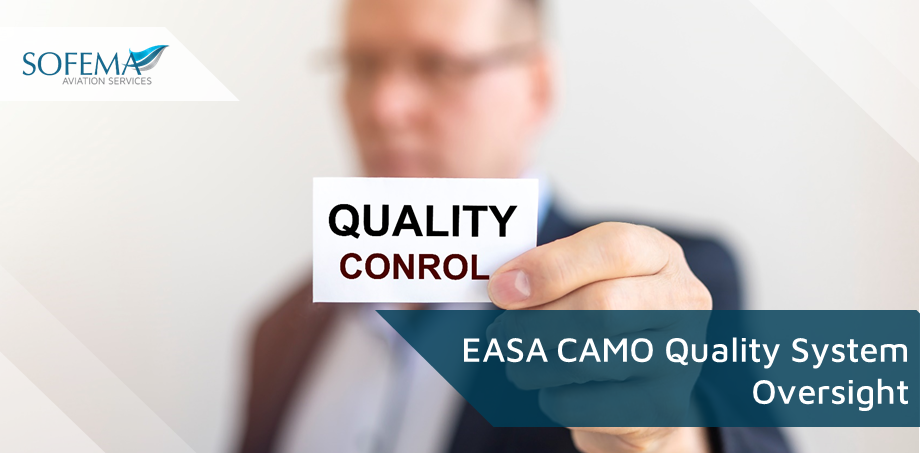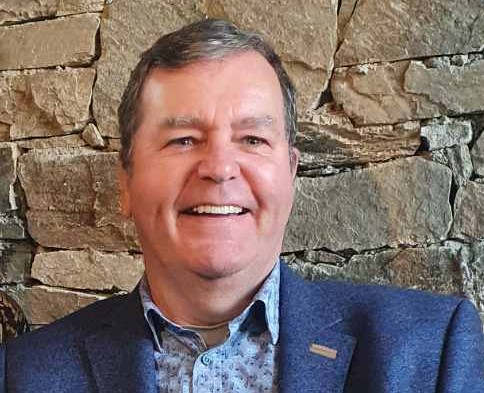Sofema Aviation Services (SAS) considers the EASA Regulatory requirements to demonstrate compliance with the EASA CAMO Quality System Oversight
EASA answered the following question –
“Does the CAMO quality system need to be subject to monitoring”?
Yes, the quality system is part of the activities of the CAMO and therefore it should be monitored.
Point M.A.712(b) requires that the quality system monitors:
• that all CAMO activities are being performed in accordance with the approved procedures, and
• the continued compliance with requirement of part-M.
The quality system procedures are considered to be within these approved procedures. This implies that quality system must be subject to audits and the CAMO audit programme/plan needs to reflect this.
What does this mean in practice – In fact it is normally accepted that a person who does NOT have responsibility for the process and procedures fund within the quality system. May be audited by a person who works within the QA System (even as an auditor)
See comments –
Besides that the audits to the quality system shall satisfy the requirement of independent audits. This is further explained in AMC M.A.712(b) point 8: the independence of the audits should be established by always ensuring that audits are carried out by personnel not responsible for the functions, procedures or products being checked.
So, the quality manager cannot audit the quality system in terms of independence of the audit. Therefore, to audit the quality system, it is acceptable:
• to use competent personnel from a different section/department in the same organisation not responsible for the quality function/procedure, or,
• to contract the independent audit element of the quality system to another organisation or a qualified competent person, or,
• that the quality system is monitored and certified against an internationally recognised quality standards by a certification organisation
The way the quality system is going to be audited has to be described in the CAME and approved by the competent authority.
What should be involved in an audit of the CAMO Quality System?
The following elements should be considered as part of the scope of the audit – however please remember the following
a) We are looking to demonstrate compliance as our primary objective not to look for findings
b) We are looking at the system NOT the Individual – means that all process and procedures should stand on their own feet and not be a function of an individual’s “personal” obligations
1/ Continuing Airworthiness Quality Policy, Plan and Audit Procedures
Continuing Airworthiness Quality Policy
The AM has the overall responsibility that the managing of continuing airworthiness will be ensured on the aircraft listed in 5.4. The PCA and the QM have at all times direct access to the AM. …(organisation’s name) CAMO … personnel are encouraged to participate actively in the quality system by reporting all discrepancies and suggestions for improvements to the QM or AM. The AM has also the overall responsibility for the quality system including the frequency, format and structure of the internal management evaluation activities as prescribed below.
Quality Plan (Programme)
b) Quality plan
The quality programme will be developed by the quality manager in liaison with the CAM
Audits are to be carried out at least once a year in order to review all aspects of continuing airworthiness activities within a period of 12 months.
Additional audits are to be carried out:
a) Whenever corrective action has to be performed before the next scheduled audit.
b) When maintenance procedures are newly established or revised.
c) Upon exchange of the nominated post holders referred to in part 0.3.
d) Before subcontracting of airworthiness management activities take place
Note this is the minimum off course Ad-Hoc surveillance audits may be added where ever these are deemed to add value to the process.
Quality Audit Procedure
An audit consists of identifying, in an objective fashion, non-conforming practices against the applicable regulation (EASA Part-M) and the procedures set out in this CAME.
This independent audit is an objective process of routine sample checks of all aspects of the CAMO including some product audits as the end result of the process.
Every audit is subjected to a deviation report. Before distribution, the preliminary conclusions are presented to the person audited. The auditor and the PCA determine in common the corrective actions to be taken, as well as the time allowed for implementation. The corrective action should be determined taking into account the root cause of the finding or concern, so that the corrective action may be designed in order the non-conformity may not reoccur.
The audits shall be documented in audit reports and shall then be recorded accordingly in the audit plan.
Quality Audit Remedial Action Procedure
When objections or defects are determined during an audit, the QM and the CAM are to decide upon corrective actions and/or procedure improvements. The decided corrective actions and/or procedure improvements are then to be conveyed to the AM.
The QM monitors the remedial actions and their compliance. The remedial actions are taken by the concerned person. The QM agrees time for correction with the CAM. He shall check if every corrective action has been applied in due course and shall record the corrective actions in his audit reports in the appropriate box. The audit report shall show by whom the corrective action was carried out and when the QM made the check. If no corrective or insufficient action has been taken, the QM shall inform the AM accordingly.
Any findings are classified into the following categories:
Level 1 findings any significant non-compliance with Part-M requirements which lowers the safety standard and hazards seriously the flight safety.
Level 2 finding Is any non-compliance with the Part-M requirements which could lower the safety standard and possibly hazard the flight safety or is a non-compliance to the CAME procedures.
The above mentioned levels of findings require rectifications by the responsible management personnel within the following time frame:
Level 1 finding immediately
Level 2 finding up to 3 months (depending on nature of finding)
Notification to CAA is required in regards of changes to the organisation’s activities/approval/location/personnel and whenever an audit finding shows existence of hazard for an aircraft managed (Level 1).
After receipt of notification of findings of an audit of CAA according to M.B.705, …(organisation’s name) CAMO … shall define a corrective action plan and demonstrate corrective action to the satisfaction of CAA within a period agreed with CAA.
Action will be taken by CAA to suspend in whole or part the approval in case of failure to comply within the timescale granted by CAA.
Quality records shall be preserved for a period of at least 2 years.
Monitoring of Continuing Airworthiness Management Activities
The Audit Plan includes an assessment of the Continuing Airworthiness Management activities against the procedures defined in the CAME and in particular the ability of the CAM’s ability to discharge their responsibilities effectively with respect to Part-M.
Monitoring the Effectiveness of the Maintenance Programme
The Audit Plan as carried out by the Quality Manager includes a review of the effectiveness of the Aircraft maintenance programme. This review will critically analyse the findings and actions taken as a result of Para. 1.5 of this CAME.
Monitoring that all maintenance is carried out by an appropriately approved Part 145 Organisation
The Annual Audit Plan includes verification that the contracted maintenance organisation’s approval is relevant to the maintenance being performed on the aircraft managed by …(organisation’s name) CAMO … .
Any feed back information requiring amendments to the maintenance contracts for aircraft, engines or components should be reviewed and the contracts amended accordingly.
Monitoring that all Contracted Maintenance is Carried Out in Accordance with the Contract, including Sub-contractors used by the Maintenance Contractor
The Audit Programme will include a review of all maintenance provided to …(organisation’s name) CAMO … by the contracted approved MO, including sub-contractors. This review will assess all of the contracted maintenance is carried out in accordance with the Maintenance Contract.
Quality Audit Personnel
The quality management is exclusively subordinate to the AM. The QM works independently, should not be one of the nominated post holders and must not be directly involved in the activity he/she has been asked to audit. The QM is responsible for ensuring that the Quality assurance program is properly established, implemented and maintained.
The QM must have:
• direct access to the AM;
• not be one of the nominated post holders; and
• have access to all parts of …(organisation’s name) CAMO …
The QM has the full authority and support from …(organisation’s name) CAMO … to perform her/his duty within the system.
The QM may delegate audits to additional auditors and/or an audit team if he/she deems it necessary. He also establishes the audit and inspection schedule to be completed during a specific calendar period according the present situation.
Qualification and competence of quality audit personnel
The Qualifications and Competence of the quality manager and quality auditors should be to a described standard which is acceptable to the Competent Authority.
Training and recurrent training of quality audit personnel
The nominated QM shall be trained in a manner to fulfil the required knowledge as required to perform quality system tasks.
The QM must be trained as a minimum:
a) Part-M
b) Quality management
c) Audit technique
d) Technical expertise on the subject audited
Auditors must be trained as the same level as the QM.
Independency of quality audit personnel
The independence of quality audit personnel must be evidenced within the organisations system
Quality staff records
Quality Staff Records must be maintained for 2 years after the person leaves the organisation (but note this is a minimum requirement)
Records keeping
To a period agreed with the regulatory authority (typically the regulator maintains such records for 4 years – however organisational requirements may take president and 6 years is not unusual)
Scanning of records prior to disposal is also carried out in many organisations
Sofema Aviation Services currently offers more than 30 Quality Assurance Training courses for details please see www.sassofia.com or email office@sassofia.com
Follow this link to our Library to find & download related documents for Free.
What`s more :
a) Introducing a Cutting Edge, Effective & Affordable CAMO Software
b) For access to a world leading CAMO Diploma Program with 25 separate courses please see the following links
Next Steps
Follow this link to our Library to find & Download related documents for Free.
Sofema Aviation Services and Sofema Online – Provide Classroom, Webinar & Online Regulatory & Vocational Training.
For further details please email team@sassofia.com
Tags:
Aviation Quality, Aviation Quality Audit, Quality Manager, EASA Regulatory, SAS blogs, PART-CAMO Quality System, EASA CAMO Quality System Oversight, Continuing Airworthiness Quality Policy, Quality plan





